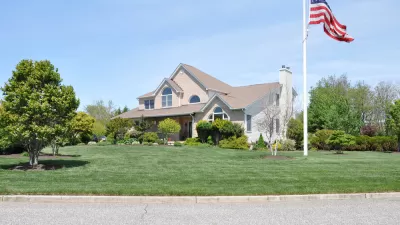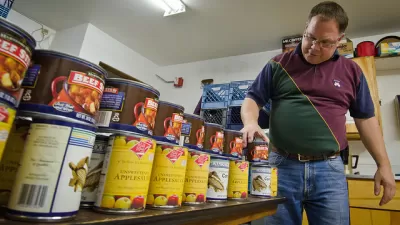Small and large cities throughout the United States are outgrowing their suburban counterparts for the first time in years. An even bigger surprise: small cities seem to be outpacing suburbs and large metros alike according to new analysis.
“When people talk about how cities are making a comeback, they often have this image of the big metropolises,” says Geoffrey Anderson, President and CEO of Smart Growth America, adding, “They might think it’s only happening in places like Washington D.C. But that’s just not true. It’s happening everywhere.” New analysis of U.S. Census data shows that small cities are growing just as quickly, if not faster, than larger cities. This is based on recent findings by Smart Growth America that builds on research published earlier this year by the Brookings Institution, which looked at population growth in large metropolitan areas.
Looking at changes from 2010 to 2011 in 171 smaller metropolitan areas, Smart Growth America calculates that small cities are seeing more growth than suburbs and big cities alike, concluding that “86.5% of small metro areas saw an increase in the number of people living in the city” and that the population in “small metro areas grew... by 0.89%” whereas population in “their suburban counterparts grew by 0.67%.” Moreover, “55.0% of cities in small metro areas grew at a faster rate than their suburban counterparts while “51.0% of cities in large metros added population at a greater rate than their suburbs.” Though these changes do not seem significant “they can have a big impact on a small city or town," posits Smart Growth America.
“Small metro areas’ cities are doing just as well, if not better than, big cities,” says Anderson. “The trend in terms of population growth is toward city living, and that’s happening at a greater rate in our smaller metro areas and the middle of the country.” According to Anderson, these trends are also the result of investments by small cities and are likely “to continue in coming years.” Clarksville, Tennessee and Lincoln, Nebraska are examples of cities that have invested in historic cores and complete streets policies, respectively, and as a result, made it onto the list of the top ten small cities that are growing at a faster rate than their suburbs.
FULL STORY: Where is America growing? The answer may surprise you.

Planetizen Federal Action Tracker
A weekly monitor of how Trump’s orders and actions are impacting planners and planning in America.

Map: Where Senate Republicans Want to Sell Your Public Lands
For public land advocates, the Senate Republicans’ proposal to sell millions of acres of public land in the West is “the biggest fight of their careers.”

Restaurant Patios Were a Pandemic Win — Why Were They so Hard to Keep?
Social distancing requirements and changes in travel patterns prompted cities to pilot new uses for street and sidewalk space. Then it got complicated.

Platform Pilsner: Vancouver Transit Agency Releases... a Beer?
TransLink will receive a portion of every sale of the four-pack.

Toronto Weighs Cheaper Transit, Parking Hikes for Major Events
Special event rates would take effect during large festivals, sports games and concerts to ‘discourage driving, manage congestion and free up space for transit.”

Berlin to Consider Car-Free Zone Larger Than Manhattan
The area bound by the 22-mile Ringbahn would still allow 12 uses of a private automobile per year per person, and several other exemptions.
Urban Design for Planners 1: Software Tools
This six-course series explores essential urban design concepts using open source software and equips planners with the tools they need to participate fully in the urban design process.
Planning for Universal Design
Learn the tools for implementing Universal Design in planning regulations.
Heyer Gruel & Associates PA
JM Goldson LLC
Custer County Colorado
City of Camden Redevelopment Agency
City of Astoria
Transportation Research & Education Center (TREC) at Portland State University
Camden Redevelopment Agency
City of Claremont
Municipality of Princeton (NJ)





























